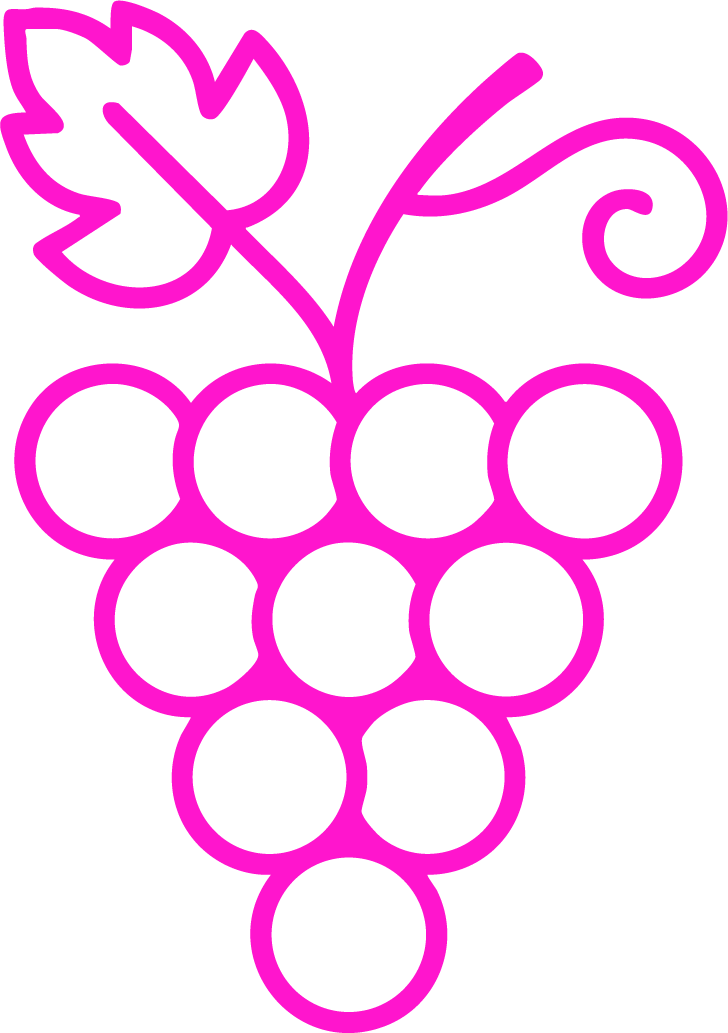Montepulciano
🔊 Pronunciation: mon-teh-pool-chi-ah-no
🔍 Quick Summary
Montepulciano is a bold, juicy red grape native to Italy, beloved for its deep color, plush texture, and approachable, food-friendly style.
📜 History
Origin: Likely born in central Italy, possibly in Abruzzo or Tuscany, with uncertain parentage and ancient cultivation dating back to Roman times.
Often confused with Vino Nobile di Montepulciano — a Sangiovese-based wine from the town of Montepulciano, not made with the Montepulciano grape.
Widespread in Abruzzo by the 18th century, where it became the region’s flagship grape.
Praised for productivity, adaptability, and deep color, which made it a popular blender across central and southern Italy.
Modern reputation surged in the late 20th century with quality-focused producers in Abruzzo and Marche elevating its profile.
🧠 What to Know
Montepulciano is a workhorse grape that can also deliver surprising depth.
Not the town! – Montepulciano (the grape) is not used in wines from Montepulciano, Tuscany.
Easy-drinking to age-worthy – Can be soft and fruity or powerful with age-worthy structure.
Late ripener – Needs a warm growing season to fully ripen, especially in higher altitudes.
Dark and inky – Naturally produces deeply pigmented wines, often used for color in blends.
Versatile and generous – High yields don’t necessarily mean dilute wines—when controlled, quality can shine.
📍 Where It’s Found
Grows widely across central and southern Italy with some New World experimentation.
🇮🇹 Abruzzo – Calcareous clay + warm hills = Rustic richness
Warm Mediterranean | 75–90°F (24–32°C) avg highs
🇮🇹 Marche – Limestone + coastal breezes = Juicy elegance
Warm continental | 72–85°F (22–29°C) avg highs
🇮🇹 Molise – Clay-loam + inland heat = Bold, ripe styles
Hot Mediterranean | 78–92°F (26–33°C) avg highs
🇮🇹 Puglia – Flat plains + dry heat = Soft, fruity wines
Hot Mediterranean | 80–95°F (27–35°C) avg highs
🇦🇺 Australia & U.S. (small plots) – Grown in limited amounts for experimentation and Italian-style blends.
👅 Flavor & Style
Montepulciano wines are deeply colored, plush reds with juicy fruit and earthy undertones.
Color: Deep ruby to purple-black
Aromas & Flavors:
Primary: Blackberry, plum, black cherry, violet
Secondary: Cocoa, baking spice, smoky notes from oak
Tertiary: Leather, tobacco, earthy savor as it ages
Structure:
Body: Medium to full
Tannin: Medium to high (usually soft and round)
Acidity: Medium
Alcohol: 13–14.5%
🛠 Winemaking Notes
Winemakers use varied techniques depending on style—easygoing or cellar-worthy.
Stainless or large oak for fruit-forward styles with minimal oak influence.
Aged in neutral or used barrels to soften tannins without overpowering flavors.
Blending with Sangiovese or local varieties adds brightness and complexity.
Extended maceration used for more structured, ageable wines.
🍽 Food Pairing Ideas
Pairs beautifully with hearty, rustic dishes and Mediterranean flavors.
Savory: Pairs beautifully with hearty, rustic dishes and Mediterranean flavors.
Cheese: Fontina, Pecorino, aged Gouda
Unexpected: BBQ wings, lentil curry, pepperoni flatbread
🔗 Related Topics to Explore
🍇 Sangiovese – Italy’s other red workhorse, with brighter acidity
🌍 Abruzzo – Montepulciano’s spiritual home
🌱 Maceration – Extracting deep color and tannins
⚗️ Umami Pairings – Matching richness with savory depth



